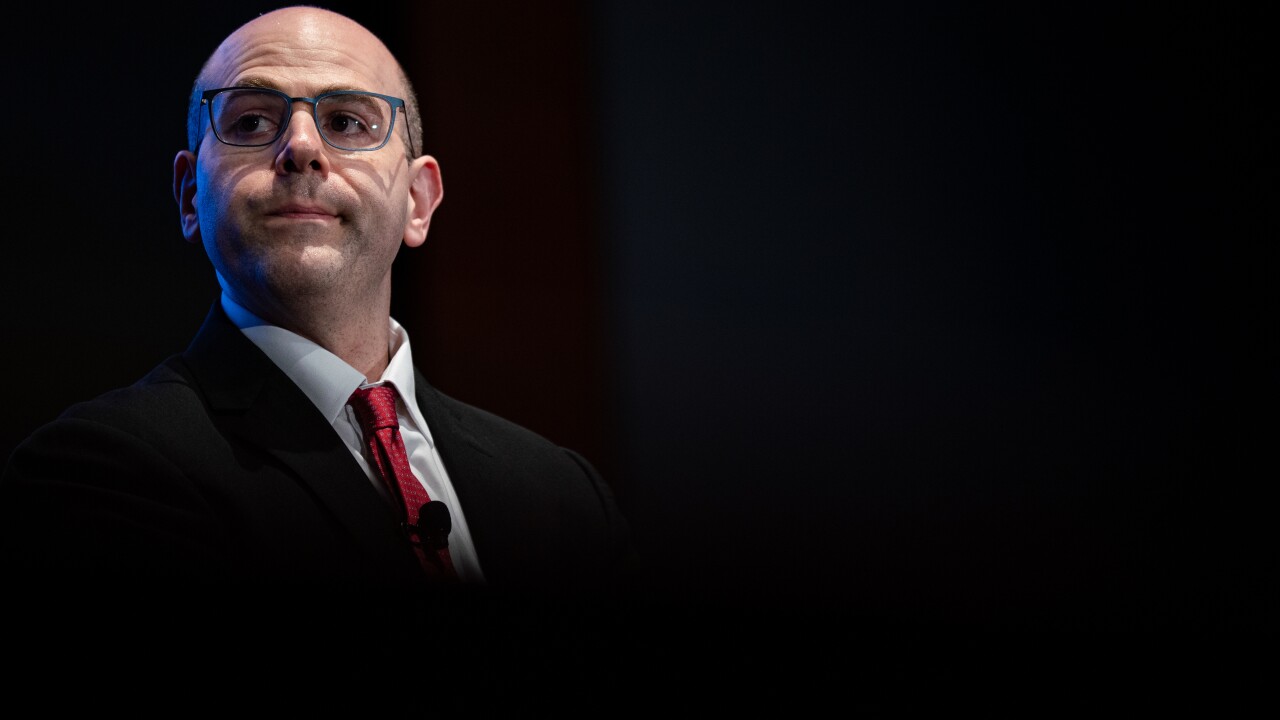Like most financial institutions, First Financial Credit Union was not an Apple Pay launch partner. And because of that, it was able to deploy Apple's mobile wallet with just $2,500 in marketing costs.
That was the money it spent on statement stuffers, said Clint Gray, the credit union's vice president of internal operations, during the Credit Union Summit at SourceMedia's PayThink, taking place this week in Las Vegas.
Other than that effort, "we put it on our website, but a lot of the banks out there had billboards talking about Apple Pay," he said. And rather than spend money on nearly identical billboards, "we let them do it for us and when our members said, 'Hey, do you have Apple Pay?' we said, 'Yes, we sure do.'"
First Financial, of New Mexico, began deploying Apple Pay shortly after the first wave of financial institutions rolled out Apple's mobile wallet. This allowed it to observe the initial problems that other issuers had with fraudsters enrolling stolen cards, and it was able to design its own security process accordingly; it requires a phone call to activate a card with Apple Pay.
First Financial's Apple Pay enrollment is not overwhelming. Of its 65,000 members, 9,000 use mobile banking and 48% of those use an iPhone. Of the iPhone users, just 8% - 345 members - use Apple Pay, though Gray noted that this number is limited because Apple Pay works only on the iPhone 6 models and Apple Watch.
"We do not have a lot of members who have the iPhone 6 or the watch," he said. "But our mindset is we need to have the product available if they want to use it."
State Employees Credit Union of North Carolina had a different mindset. Realizing that only half of its members used Apple devices, the credit union chose to wait for Google to launch a competing product. It is only now going through the process of deploying Apple Pay to its members, and has submitted paperwork to support Android Pay as well.
"We're a very slow follower with Apple Pay," said Leanne Phelps, State Employees Credit Union's senior vice president of card services. "We are very, very determined that all of our members are going to be treated equally and did not feel that we could launch a product to support 51% of our members when we did not have an alternative for the other 49%."
Pentagon Federal Credit Union began deploying Apple Pay shortly after it was announced, but this meant that pre-launch, it had to deal with cryptic messages from its partners who were bound by Apple's notoriously strict non disclosure agreement.
"We were a little curious why our Visa rep was talking about this thing called tokenization," said Scott Young, Pentagon FCU's vice president of card services.
All of the credit unions that enrolled with Apple Pay post-launch faced an unexpected bottleneck. To get card art into Apple Pay, they had to wait for the card brands to approve each design.
"One of the reasons we were delayed in [our Apple Pay rollout] is because we have 79 unique card art variations at Pen Fed," Young said. The credit union issues Visa, MasterCard and American Express cards, and "having one holistic card art that supports all three brands wasn't desirable ... and that ultimately caused the scope creep that caused us to be pushed to the third round or fourth round" of Apple Pay supporters, he said.
It is possible to choose a generic card design for all of an issuer's products, Young and the other executives said. This can speed up deployment but it sacrifices some of an issuer's branding in the process.
State Employees Credit Union has 12 card designs which it recently submitted for approval, Phelps said.
Being a late adopter meant her credit union could benefit from the experiences of other companies that had to confront the logistical, marketing and security concerns around Apple Pay. But even Phelps warned against waiting too long.
"If the credit union industry hopes to survive and be there for my grandchildren and their grandchildren ... we've got to be there" on mobile devices to meet their expectations, she said.





